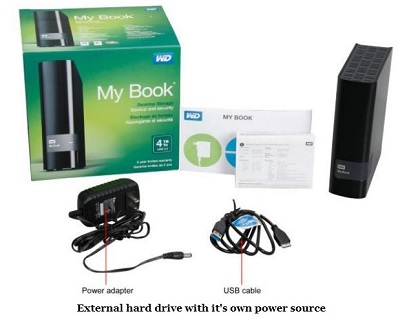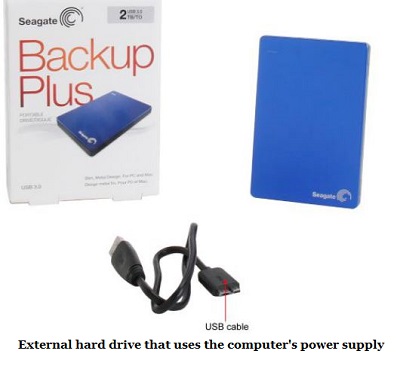External Hard Drives
There is a variety of different types of hard drives. It is hard to decide which one you need. There is SATA hard drives and there is IDE drives. Here is information on determining if you have an IDE or a SATA drive and connections. There is internal and external drives. Here is information on the difference between External and Internal Drives.
External hard drives are great to use. Best way to explain the functionality of it is to use an example. Mary works at home and she works at an office. She has too many files that she uses at both locations and needs to move them back and forth.
She can use a flash drive but there is disadvantages of it.
-
Drive capacity is limited and she may need more than what it offers. (I think the max size now is 64 gigs)
-
The life span of the flash is low. They will eventually die and that is dangerous if you forget to back it up
-
The connector can easily get damaged when you insert and remove it.
-
The drive costs around $20 to $60 depending on the size
Mary should use an external USB drive.
-
External hard drives size is a 100 times larger than a USB drive.
-
They are much more dependable than a flash drive and the life expectancy is longer.
-
You can take the drive with you and plug it into any computer that has a USB port and access your data.
-
The cost is much cheaper than a flash drive. Currently, a 1TB drive is around $120. A 4 gig flash drive costs around $10. To get 1TB of drive space with a flash drive you would have to buy 500 4 gig flash drives and that would cost you about $5000 where it would only cost you around $120 for the external drive.
Currently, you can get an external hard drive from 120 Gigs to 4 Terabytes. The larger the drive the more expensive it is. The cost varies depending on the size of the drive and where you buy it. It can range from $80 to $300.
Powered or non powered
You can get an external hard drive that uses it's own power source or you can get one that uses the power source from the system you plug the hard drive into.
 |
The external hard drive pictured above uses it's own power source. It is very easy to hook up. You just plug the power into the back of the drive and plug the cord into an electrical outlet. You then plug the USB cord into an available USB port on the computer. These are more reliable than the ones that don't use their own power source. This one is still portable as the external drives with no power cord. It just has a power cord that you will have to plug in. For information on USB, click here.
 |
The external hard drive pictured above uses the power supply of the computer the external hard drive is plugged into. The advantage of this one is if you are using it on a laptop and need portability. It only has the USB cable. It does not have a power cord. The disadvantage is if your computer power supply is not very strong, you may have issues seeing the external hard drive.
To use this drive, you just plug the USB cord into the back of the drive and then into an available USB port. For information on USB, click here.
If you have a hard drive that you need to connect externally on the computer, click here for information
